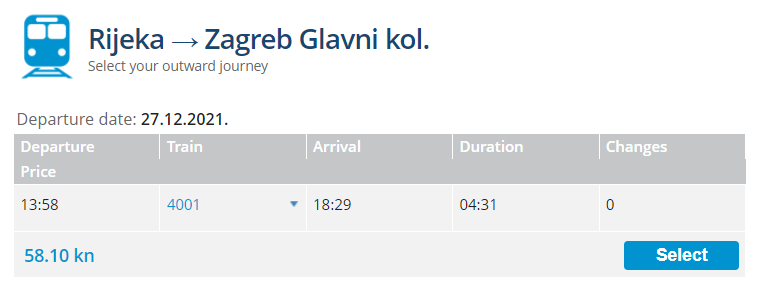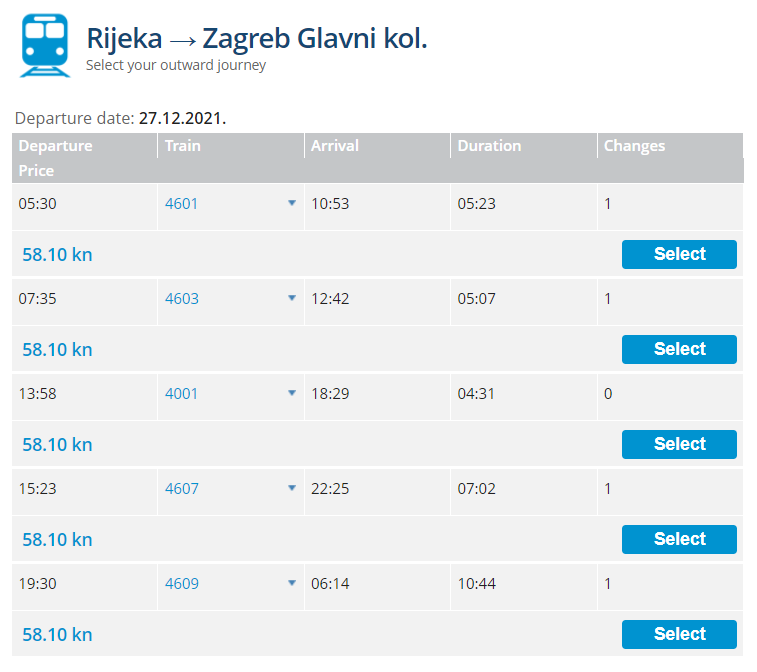Volume Of Rail Transport In Croatia Increases In 2021
ZAGREB, 16 March 2022 - A total of 13.5 million passengers were transported by rail in Croatia in 2021, which is 400,000 more than in 2020, as well as 15.3 million tonnes of goods, which is an increase of 200,000 tonnes, according to the Croatian Regulatory Authority for Network Industries (HAKOM).
The data indicates that railway passenger transport is slowly recovering from the crisis caused by the coronavirus pandemic, HAKOM said.
In the last quarter of 2021, slightly more than 4 million people used this mode of transport, up by 500,000 from the same period of 2020.
However, the number of railway passengers has still not reached the 2019 level when nearly 20 million people travelled by rail, of whom nearly 5.5 million did so in the last quarter of that year, which is nearly 1.5 million more than at the same time last year.
The Q4 2021 increase was partly due to the government decision on free rail transport for children and students, HAKOM noted.
In Q4 2021, 4.2 million tonnes of goods was transported by rail, which is about 100,000 tonnes more than in the same period of 2020 and about 310,000 tonnes more than in the last quarter of 2019.
Business: For more, check out our business section.
Travelling from Zagreb to Rijeka by Rail? You Might Want to Reconsider
Railway connectivity between the capital and the biggest Croatian port has been more than inadequate lately, with no express lines available and a single direct line in operation
Rijeka city councillors Ivana Prica and Kristian Čarapić of SDP criticised the poor railway connectivity between Rijeka and Zagreb at a recent press conference, reported Novi list (Marinko Glavan). The councillors demanded that the Croatian Railways (HŽ) reinstate the high-speed train line between Rijeka and Zagreb that was scrapped last year.
‘The last remaining express service operating on the route Rijeka-Zagreb-Osijek was cancelled on December 24th of last year, while the express line Zagreb-Rijeka-Zagreb has been scrapped even earlier. It thus became impossible to travel by rail from Rijeka to Zagreb and back on the same day. It’s shameful that the capital city and the biggest port in Croatia aren't better connected in terms of railway passenger transport’, they said.
A quick search of the HŽ booking page reflects the painful reality of travelling by rail in Croatia. Not only is there no express service between Rijeka and Zagreb, but there’s only one direct line connecting the two cities at present. That particular trip takes 4.5 hours, a tedious ride compared to 2 - 2.5 hours it takes to get to the capital by bus or little over 1.5 hours if you’re travelling by car.
Other four available services involve a change of train halfway through and take anywhere from 5.5 hours for an early morning service to almost 11 hours in case of a night line:
Trip duration listed on the timetable is the best case scenario. The site warns that ‘due to work on certain sections of the railway, deviations from the published timetable are possible’. This is a frequent occurrence that’s more than likely to extend the duration of your trip by an hour or two and involves a transfer from a train to a bus.
The timetable could use some work as well. The only direct line departs from Rijeka at 1:58 PM and arrives in Zagreb at 6:29 PM. It’s unclear who would find this convenient, as you’d technically waste half a day before departure and would effectively be forced to stay in Zagreb overnight in case you need to get anything done.
There are two morning lines, departing at 5:30 and 7:35 AM, but they only arrive in the capital at 11 AM and 12:42 PM respectively. If you opted for one of these, you’d have no way of getting back to Rijeka on the same day, unless you were willing to either hop on a return train an hour after your arrival, or endure a 13-hour overnight train ride. Here’s the schedule:
The only direct line from Zagreb to Rijeka departs at 8 in the morning and also has a 4.5 hour trip duration. The timetable doesn’t match a normal workday schedule, and frequent travellers on this route - such as college students - essentially don’t have a choice but to travel by bus.
It’s a shame, as travelling by rail is not only more comfortable than taking a bus, but is also the most sustainable mode of passenger and freight transport.
Bus lines between Zagreb and Rijeka (and vice versa) are much more frequent, with several companies operating on the route and departing every hour or so throughout the day.
There’s not much to complain about on that front, except if you were looking to make a day trip to Zagreb during the holiday season. The last Zagreb-Rijeka bus departs at 7 PM on most days (weekends included), so if you were hoping to revel in the festive spirit of Advent in Zagreb, you’d be limited to daytime activities.
Arguably, Christmas markets are best enjoyed in the evening, and you’d have an hour or so to get a cup of mulled wine and appreciate the sparkling lights before hurrying back to the bus station. This goes for those travelling back to Istria as well, as the mentioned 7 PM service is also the last one that continues on to Pazin and Pula after a stop in Rijeka.
Perhaps a good way for the capital to generate more overnight stays in December, but considering how popular Advent in Zagreb has been in recent years, it could use a few more bus lines in evening hours to accommodate those who don’t necessarily want to spend the weekend.
€5.4 bn To Be Invested in Railways Upgrade Until 2030
ZAGREB, 11 Oct 2021 - The Croatian railway system should be restructured and upgraded to the European level by 2030, with the value of related projects estimated at €5.4 billion, it was said at a conference organized by the Hanza Media publishing company in Zagreb on Monday.
Addressing the event, Transport and Infrastructure Minister Oleg Butković said that current investments in the transport sector totaled just above HRK 25 billion, with investments in the railway sector accounting for about 11 billion.
"As a sector, the railway is in a neglected state and it is a major challenge for the government to build, modernize and restructure it... and raise it to the European level by 2030," Butković said, noting that the National Recovery and Resilience Plan envisaged HRK 670 million for the railways and pointing in that regard also to the Multiannual Financial Framework.
€5.4 billion to be invested in railways until 2030
HŽ Infrastruktura railway maintenance company CEO Ivan Kršić said that projects to build and modernize the railway infrastructure in the period until 2030 amounted to €5.4 billion, while the length of renovated and modernized railways would be 780 kilometers or 30% of the total network, to be mostly co-financed by the EU with 85% of the necessary funding.
Most of the investments referred to projects along two transport corridors - RH1, running from the border with Slovenia to the border with Serbia, and RH2 - stretching from the northern Adriatic port city of Rijeka to the border with Hungary.
Three projects have been completed so far along Corridor RH1 and four more sections are in different stages of preparation or implementation.
One of the active projects along Corridor RH2 is the Dugo Selo-Križevci railway section, which must be completed by 2023, while reconstruction work on several other sections is expected to start soon.
In addition to the two corridors, 12 more projects are planned on the rest of the railway network, Kršić said.
Croatia Pan Europe Trains Will Run 160 Kilometres Per Hour By 2030
November 2, 2020 – From southern Spain to Budapest through Rijeka and Zagreb and from Salzburg through Zagreb, Belgrade and Skopje to Greece, Croatia pan Europe trains will run 160 kilometres per hour by 2030
In the biggest investment ever made in the infrastructure of the country's rail network, Croatia pan Europe trains will run 160 kilometres Per Hour By 2030. In an investment costing 4.5 billion Euros, 750 kilometres of railways will be modernised.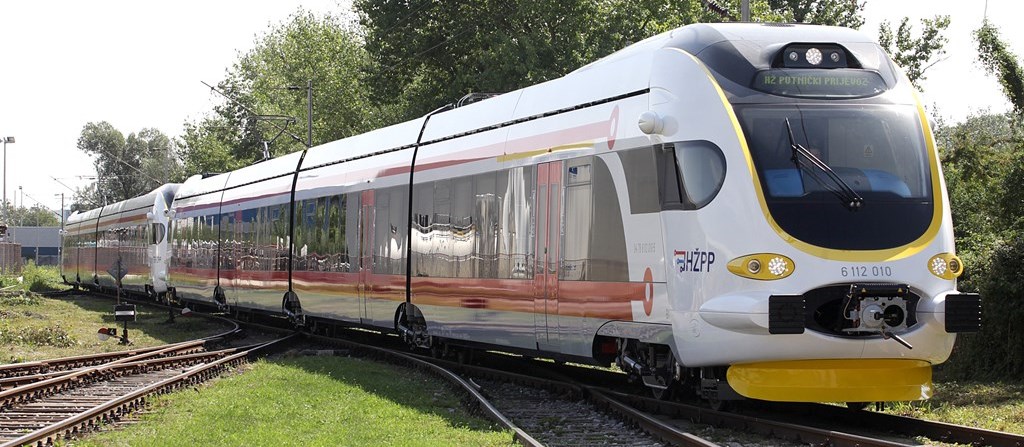 © HZPP
© HZPP
The lines that will receive the upgrade will connect Rijeka to Budapest in Hungary via Zagreb (RH2) and Zagreb to Belgrade via Vinkovci (RH1). Though these lines already exist, they have never undergone an overhaul of the scale proposed. The modernisation with ensure double lanes across the whole of both routes and facilitate passenger train speeds of 160 kilometres per hour.
The level of investment means that during the next ten years, HŽ Infrastruktura's (Croatian Railway Infrastructure Company) rebuild of the Croatia pan Europe trains network will be the largest infrastructure project in the Republic of Croatia and the largest beneficiary of EU grants in the transport sector. Most of the money for the modernisation is coming from European Union grants. Almeria on the Mediterranean, in Andalusia, southern Spain, where the Mediterranean Corridor begins © ddz photo
Almeria on the Mediterranean, in Andalusia, southern Spain, where the Mediterranean Corridor begins © ddz photo
The RH2 line is part of the Mediterranean Corridor which connects the south of the Iberian peninsula with eastern Hungary via six countries. The line runs from Almeria on the Mediterranean coast in the south-east of Spain, through Madrid and Barcelona. It passes through Marseille in France, then northern Italy, Slovenia, Croatia, the Hungarian capital of Budapest, before finishing in Záhony in the east of Hungary, not far from the border with Ukraine. The route covers more than 6000 kilometres. The Croatian section will pass through Jurdani (six kilometres north of Opatija), Rijeka, Karlovac, Zagreb, Dugo Selo, Križevci and Koprivnica.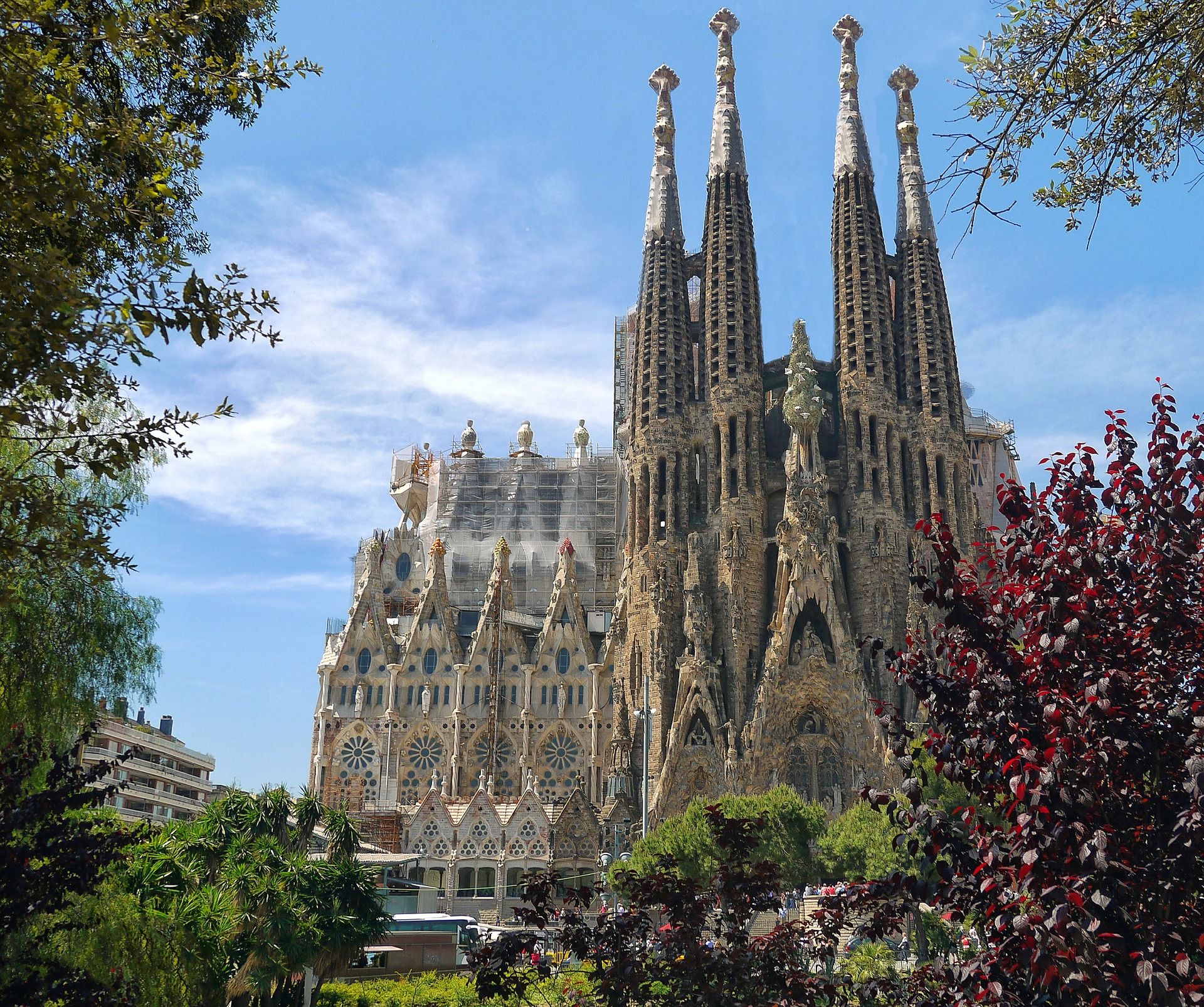 To Croatian rail passengers, the Spanish city of Barcelona will be just a few hours away by 2030 © Patrice Audet
To Croatian rail passengers, the Spanish city of Barcelona will be just a few hours away by 2030 © Patrice Audet
The RH1 line is part of the Pan-European Corridor X. The Croatia pan Europe trains section of this transport route was once one of the three lines taken by the Orient Express. The modernised rail line will start in Salzburg, Austria and pass through Ljubljana before reaching Zagreb. The line will pass through Slavonski Brod and Vinkovci before making its way to Belgrade, then Niš in southern Serbia. The old Oriental Express line then headed east, to Istanbul via Sofia, Bulgaria. The EU-funded train section of the Pan-European Corridor X instead heads south, to Thessaloniki in Greece via Skopje in Macedonia.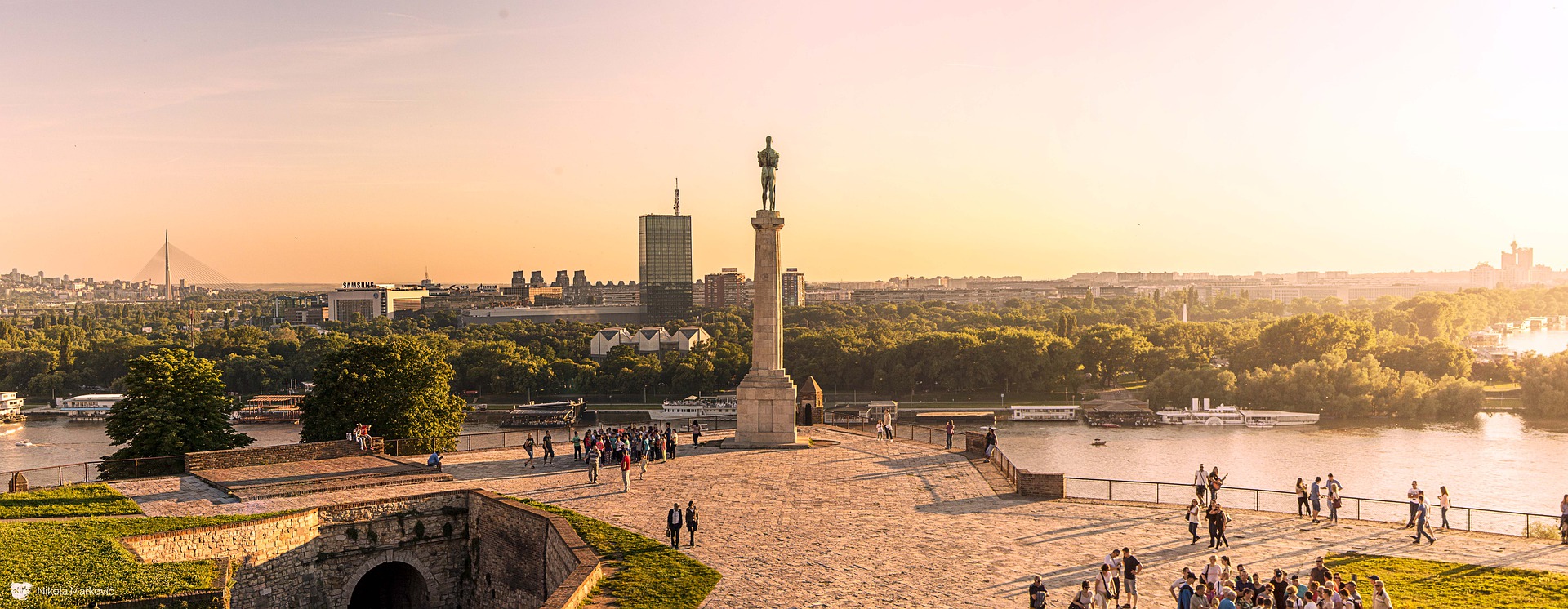 The rail journey time between Zagreb and Belgrade (pictured) will be shortened considerably by the improvements © Djordje Jovanovic
The rail journey time between Zagreb and Belgrade (pictured) will be shortened considerably by the improvements © Djordje Jovanovic
Trains are currently the greenest transport option for long-distance travel. As the world heads in the direction of seeking energy sources that do not rely on finite fossil fuels, rail also currently looks to be the long-distance travel option best-equipped to meet this challenge. In the future, visitors from all across Europe may increasingly rely on the Croatia pan European trains network in order to access the country. The improvements also increase business and leisure opportunities for Croatians in Europe. Thessaloniki in Greece is one of the most popular cities in Europe for visitors. The renewed rail section of the Pan European Corridor X will end here © Dimitris Vetsikas
Thessaloniki in Greece is one of the most popular cities in Europe for visitors. The renewed rail section of the Pan European Corridor X will end here © Dimitris Vetsikas
Around 935 million Euros was invested in the Croatian railway infrastructure between 2010 and 2019. The new investment dwarfs those figures. The initial investment, occurring between 2020 and 2024 amounts to as much as 1.8 billion Euros, of which almost 78.7 per cent is co-financed by the European Structural and Investment Funds (ESI) and the Connecting Europe Facility (CEF). From 2025 to 2030, EU funds totalling more than 2.7 billion Euros are expected to be invested in the Croatia pan European trains network.
Freight train passage along the lines will also be increased, reaching a new speed of 120 kilometres per hour. The Croatia pan European trains network also offers great potential to open up continental Croatia regions to international visitors. The Croatian railway network currently has 2,617 kilometres of track, of which 274 kilometres are double-track and 980 are electrified.
For the latest travel info, bookmark our main travel info article, which is updated daily.
Read the Croatian Travel Update in your language - now available in 24 languages
Continental Croatia Trains: Inland Opens Up With Green Travel
October 3, 2020 - With charter airlines in a state of flux and Croatia Railways beginning a renewal of their fleet in Slavonia, are continental Croatia trains the eco-friendly and best way to unlock the inland's amazing potential?
Everything changes. Nothing stays the same. Even before 2020 arrived, lifestyles and trends were headed in new directions. Eco-tourism and agro-tourism were two of the fastest-growing areas within the travel sector, this behaviour change a response to concerns about the environment. And nowhere in the country stands better poised to take advantage of this interest than continental Croatia.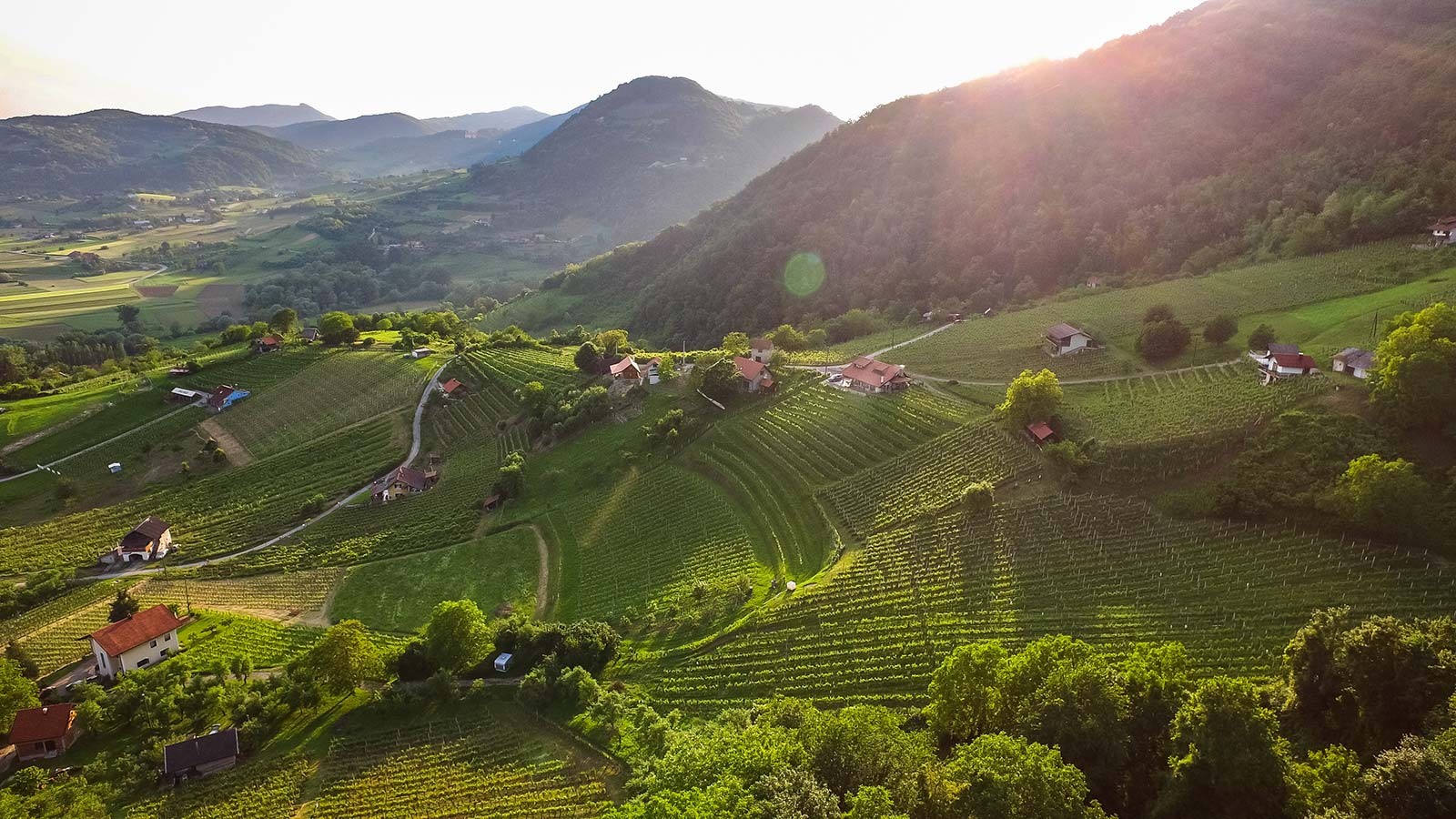 Impossibly pretty Zagorje - the region lies just north of Zagreb and is accessible by continental Croatia trains © Ivo Biocina / Croatia National Tourist Board
Impossibly pretty Zagorje - the region lies just north of Zagreb and is accessible by continental Croatia trains © Ivo Biocina / Croatia National Tourist Board
From the impossibly pretty hills of Zagorje, the peaceful rivers of Karlovac county and the hidden vineyards that surround the capital Zagreb to the vast Pannonian flatlands that stretch to Slavonia, Baranya, Vukovar-Srijem and beyond, the varied topography of continental Croatia is wild, exciting and - by many - wholly undiscovered.
This is land where agriculture and nature thrive side by side, where the stresses of modern-day existence ebb away as you readjust to a way of life that would look mostly familiar to the people who lived here centuries ago. These are places where you can truly be at one with yourself and with your surroundings. In continental Croatia, you often find yourself in an environment that is both timeless and traditional, yet wholly contemporary in regards to its ecological aspirations. And you're never far away from an exciting city environment that you can dip into on a whim – not just Zagreb, but Osijek, Slavonski Brod, Karlovac, Sisak and Varaždin too. To those who really know and love Croatia, Osijek is simply unmissable. It is both the capital of and the doorway to Slavonia and Baranya and should be more accessible by continental Croatia trains. Sadly, international transportation links to the city by air are also quite poor. Improvements in accessibility to Slavonia and Baranya by rail and road are imminent © Romulić & Stojčić
To those who really know and love Croatia, Osijek is simply unmissable. It is both the capital of and the doorway to Slavonia and Baranya and should be more accessible by continental Croatia trains. Sadly, international transportation links to the city by air are also quite poor. Improvements in accessibility to Slavonia and Baranya by rail and road are imminent © Romulić & Stojčić
Unlocking the incredible potential of continental Croatia relies on getting the message out there and facilitating travel to these regions
In recent TCN features we have detailed that motorways within Croatia are among the best in Europe - once you're inside Croatia, travelling by car (or bus) between the regions couldn't be easier. We have also seen evidence of the huge interest in travelling here by rail and using continental Croatia trains.
Of all the modern methods of long-distance travel, rail is by far the most eco-friendly. What better way to begin an environmentally friendly holiday than by arriving on continental Croatia trains? When the country wisely decided to prioritise its internal motorway system, a modern and fast inter-regional rail network was put on the back burner. Nowhere suffers greater from this decision than continental Croatia.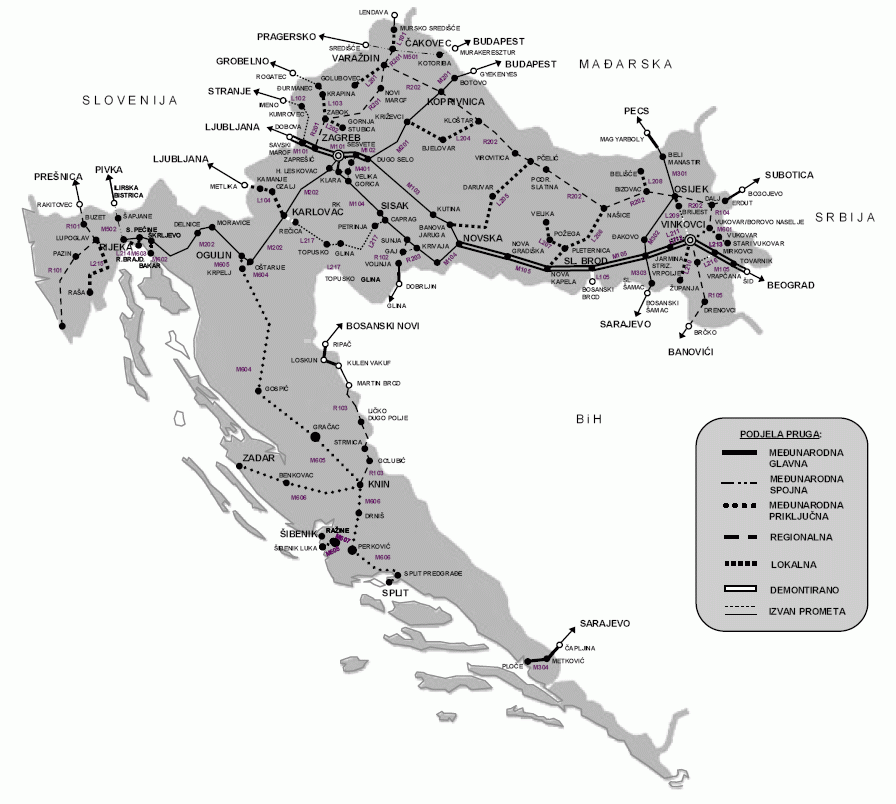 The Croatian rail network © Croatian Official Document uploaded to Wikipedia by Epepe
The Croatian rail network © Croatian Official Document uploaded to Wikipedia by Epepe
The only high-speed line that currently exists in Croatia links Rijeka to Budapest, via Zagreb and Koprivnica. Planned improvements hope to cut journey times between Zagreb and its nearest coastal city to an hour. Same as it ever was - Rijeka was the first Croatian city to be connected internationally by rail. That line also ran into the heart of Austro-Hungary and facilitated upper-class travel to places like Opatija. But does it best benefit the country to invest in more links to the coast or in continental Croatia trains? Well, the inland is not being ignored. Upgrades are being made to continental Croatia trains. This impressive beast actually services the country's coast. But would more investment in the continental Croatia trains network better service more people and help unlock the inland to tourists? Around 70% of the country's inhabitants live in continental Croatia © HŽPP
This impressive beast actually services the country's coast. But would more investment in the continental Croatia trains network better service more people and help unlock the inland to tourists? Around 70% of the country's inhabitants live in continental Croatia © HŽPP
The rail link between Zagreb and Slavonski Brod is so historic that it was once part of the four routes of the Orient Express. It has been maintained to a standard where you can make a relatively quick journey from the capital to Vinkovci via Slavonski Brod. The same cannot be said for rail travel to Osijek, the access point to Baranya and much more. So slow is the connection between Osijek and Zagreb that it has been possible over recent times to reach the Slavonian capital quicker by taking the train to Vinkovci, then the bus to Osijek, rather than travelling direct by rail.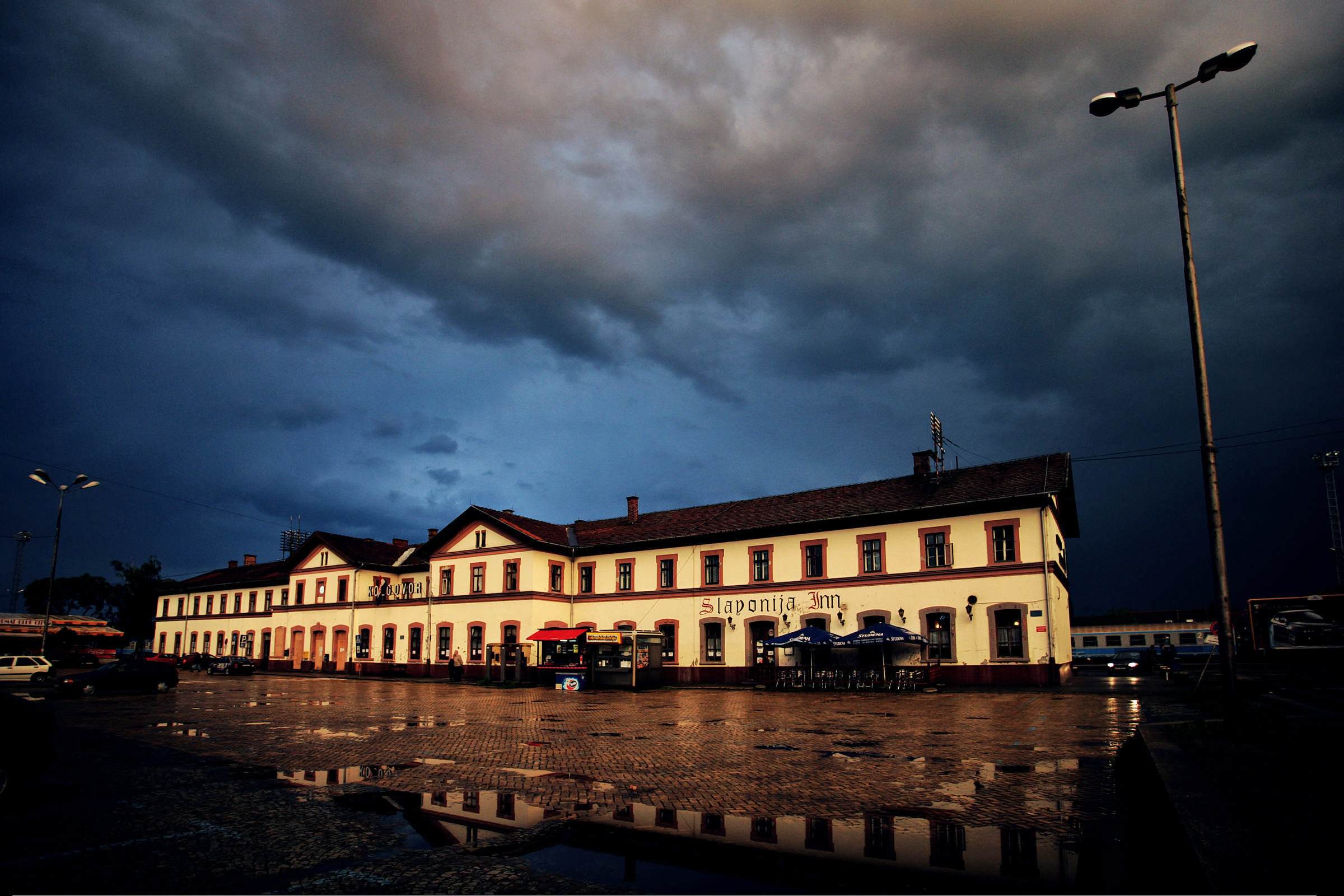 Osijek train station. A renovation to the building is planned for the near future © Romulić & Stojčić
Osijek train station. A renovation to the building is planned for the near future © Romulić & Stojčić
However, in February this year, Croatian Railways introduced four direct daily lines between Slavonski Brod and Osijek. And there will be a new tilting train line that will run between Zagreb to Osijek on Friday afternoon and from Osijek to Zagreb on Sunday afternoon, facilitating student travel. On October 15, the first low-floor train will run between Osijek and Vinkovci as an additional part of the renewal of their continental Croatia trains fleet in Slavonia. The welcome return of Croatia's second-oldest international rail line - linking Osijek to Pécs in Hungary, via Beli Manastir and Baranya - was introduced in late 2018.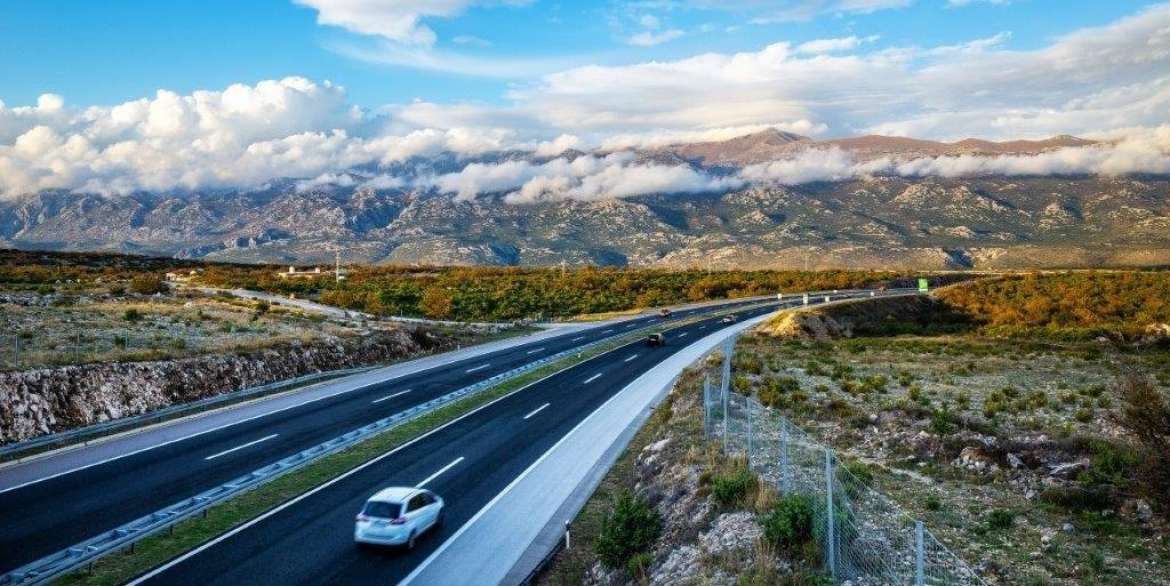 A motorway stretch between Metković and Dubrovnik, integrating the Pelješac bridge and the Croatian segment of the European corridor are the final big remaining projects in a three-decade-long undertaking to give Croatia one of the best motorway networks in Europe. Should Croatia's rail network be next? © Hrvatske Autoceste
A motorway stretch between Metković and Dubrovnik, integrating the Pelješac bridge and the Croatian segment of the European corridor are the final big remaining projects in a three-decade-long undertaking to give Croatia one of the best motorway networks in Europe. Should Croatia's rail network be next? © Hrvatske Autoceste
Access to Slavonia and Baranya will also be massively facilitated upon completion of the European corridor, which will connect North Europe to the Adriatic. Starting in Budapest, it necessitates the building of a bridge near Beli Manastir. Thereafter the motorway will pass by Osijek, connect to the Zagreb-Slavonia motorway near Lipovac, then pass through Bosnia and its capital Sarajevo and on to Ploče.
The removal of budget airline flights to the airport in Osijek remains a hindrance to attracting many international visitors to Slavonia and Baranya. However, with charter airlines facing the greatest uncertainty of all modes of transport at the current time, though their return is a must, it is perhaps now an ambition that should remain more long term. For the immediate future, improvements to rail travel look to be a brilliant way of opening up not only Slavonia, Baranya and Vukovar-Srijem, but also an eco-friendly access point capable of serving the whole of untapped continental Croatia.
For the latest travel info, bookmark our main travel info article, which is updated daily.
Read the Croatian Travel Update in your language - now available in 24 languages
Butkovic: 1.5 Billion Euros Invested in Railways
ZAGREB, August 27, 2020 - Maritime Affairs, Transport and Infrastructure Minister Oleg Butkovic visited on Tuesday workers working on the reconstruction of the railway running from the Zagreb West Rail Station to Savski Marof.
Minister Butkovic underscored that the project was a part of a large transport infrastructure investment cycle worth HRK 20 billion (approx. €2.67 bn), with work on the railway accounting for €1.5 billion of that amount.
The reconstruction of the railway is worth HRK 366 million (excluding VAT), most of which is covered by a loan aproved by the World Bank, that is, the International Bank for Resconstruction and Development (IBRD).
The works on the reconstruction began in May.
The contract for the reconstruction works was signed in February this year between the HZ Infrastruktura railway operator and the Austrian Swietelsky company. The deadline for completion is 27 months, which means the railway should be completed in summer 2022.
The railway from Savski Marof to Zagreb West Rail Station, which is about 18 km long, is the most frequented railway in Croatia, with over 160 trains passing along the route every day, and it is a part of the RH1 railway corridor, which is very significant for international freight transport and urban-suburban transport.
The reconstruction should increase the level of safety and the carrying capacity of the rail line, as well as reduce the cost of maintenance, while the trains are expected to be able to travel at 120 km/h.
Large transport investment cycle
During his visit to Savski Marof, Minister Butkovic underscored that together with another large construction site nearby - the reconstruction of the railway from Zapresic to Zabok - an investment of about HRK 900 million was being made in railway reconstruction in that area alone.
Minister Butkovic announced that investments in railway would continue in the coming years, and next week a contract would be signed for the purchase of 22 new trains for the rail transport company HZ Putnicki Prijevoz, a project worth more than a billion kuna.
According to the data he presented, the total transport performance so far this year is at about 50% of last year's results, and rail freight transport, and even passenger transport, he said, have not seen much damage because there was even more demand for that type of transport during the coronavirus crisis.
President of the HZ Infrastruktura railway operator Ivan Krsic underscored that the works on the reconstruction of the railway from Zagreb West Rail Station to Savski Marof were progressing well, noting that the railway was last overhauled in 1974.
For the latest travel info, bookmark our main travel info article, which is updated daily.
Read the Croatian Travel Update in your language - now available in 24 languages
Project for Lowland Railway to Rijeka Starts
ZAGREB, Aug 10, 2020 - The HZ Infrastruktura company is embarking on a project to upgrade the existing and build a second track of the railway running from Hrvatski Leskovac to Karlovac, with the value of the project being the highest of all other Croatian railway projects so far, amounting to HRK 2.3 billion, not including VAT, Vecernji List daily says.
The tender for the project, which will be co-financed by the European Union, which will provide 85% of the funding, will be published in September.
The Hrvatski Leskovac section is part of a railway running from Rijeka to the border with Hungary, and work has already started on upgrading the single-track line to a dual track from Zagreb to the border. Work is already underway on the section Dugo Selo-Krizevci and preparations are underway for work to begin on the section running from Krizevci to the state border.
Work on the Hrvatski Leskovac - Karlovac section will thus also launch work on upgrading the railway from Zagreb to Rijeka to a modern, dual track.
The Rijeka-Zagreb-Budapest railway is part of the Mediterranean TEN-T corridor.
The implementation of this project as well as other sections on which work has been underway or is planned will increase the competitiveness of the port of Rijeka by improving its transport connectivity to central European markets, the daily says.
Transport Minister Oleg Butkovic has said that the entire project could be completed by 2027.
Project More Valuable than Peljesac Bridge: Turks Building New Railway
When you think of projects in Croatia which carry enormous value, you more than likely think no further than the mammoth task of constructing the long awaited Peljesac bridge down in Dalmatia, which will work to connect the extreme south of Dalmatia to the rest of the country without having to cross the border into and then back out of Neum, Bosnia and Herzegovina. But while the bridge is a strategic project for both the state and for the EU, that isn't all that's going on...
As Poslovni Dnevnik writes on the 2nd of August, 2020, there is one infrastructure project going on on Croatian land which is even more valuable than the huge sum Peljesac bridge implies.
The Turks will soon ''set up camp'' near the continental Croatian town of Krizevci, following a decision made at the City Council level to lease some construction land in the Gornji Čret economic zone to Cengiz Insaat Sanayi ve Ticaret A.S.
Back in May this year, the aforementioned company began constructing (and rebuilding) a railway from Križevci to Koprivnica and then on towards the Croatian border with Hungary (individually, it represents the largest infrastructure project in all of Croatia, worth 2.41 billion kuna without VAT, with 85% of that figure funded by the EU), and for such a capital multi-year project, space to accommodate contractors is needed.
In the ''game'' for the location of the workers' camp, Lepavina, Vojakovački Kloštar and the Križevci zone were all mentioned, the latter of which proved to be the final and best choice. The Turks applied to the city administration's tender for the lease, after sending a letter of intent. It is a plot covering about sixteen hectares in the eastern part of the zone, which has been leased for five years. As the investor, Cengiz undertakes the responsibility "of preparing the project documentation, obtaining the [necessary] permits and building all of the transport and utility infrastructure for the construction of a base for the accommodation of the workers on the construction of the railway," according to the notice from the city administration.
The camp would house about 400 workers in more than 100 prefabricated houses. However, Cengiz will not pay the rent with money (in the sense of a monthly starting price of 0.25 kn / m2 + VAT), but after the expiration of the contract, the road, gas, water and other facilities will be handed over to the owner of the land - the City.
This was the trigger for the reactions among the local opposition, which resents the fact that instead of building production halls, the zones are rented out for these camps and that the rental price isn't clearly defined. Mayor Mario Rajn retorts that the City of Križevci will save around 4.5 million kuna, which would otherwise be the cost of the very project.
"The complete works will be done by the investor. If the City had gone to build so much infrastructure and leased out the land, we'd have had a deficit of about 1.8 million kuna because we'd have earned only 2.7 million,'' points out Rajn.
Otherwise, Cengiz, the Turkish company responsible for the undertaking of this not quite larger than life but certainly ''larger than Peljesac bridge'' project, has annual revenues of over a billion US dollars. It has built, among other things, a new large airport in Istanbul, and it is working on the second pipe of the tunnel between Slovenia and Austria.
For more, follow our business section.


